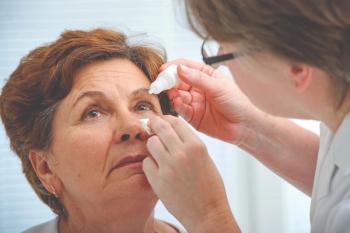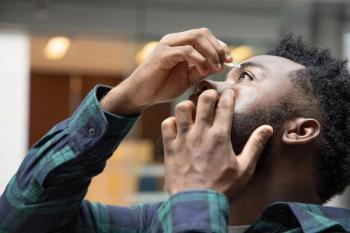
Using Miotic Agents for the Management of Presbyopia
Expert eye care specialists discuss the role of miotic agents in targeting presbyopia in patients.
Episodes in this series

Barry Eiden, OD, FAAO, FSLS: We’re talking about presbyopia and things that happen to our focusing system as we age—the lens hardening, and so on. But the central point of our conversation is the role of eye drops, specifically miotics to affect pupil size to help individuals with presbyopia see better up close. Andy, how does that whole mechanism work? What’s the relationship between both the miosis and the pupil size change, as well as the effect on other elements of the eyes that some miotics might have?
Andrew S. Morgenstern, OD, FAAO, FNAP: For those of you who aren’t comfortable with the term miosis, we have 2 actions that happen with the pupil. The pupil can get smaller, which is miosis, or larger, which is mydriasis. Imagine the aperture of a camera: as the hole opens, more light comes in. The opposite happens when you have miosis: the pupil constricts, and less light comes in. An interesting thing happens with light. When the light comes through a small enough hole, it doesn’t act as a big wave anymore, but those light beams start to act in parallel. Because they come in parallel, they essentially have an infinite focal point, and they don’t blur. With miosis, we’re trying to take that pupil and constrict it, so we have enough parallel light rays and clear vision regardless of your ability to focus or how far away the target is that you’re looking at. It’s a pretty simplified way of using it.
All the stuff that we do is funny because a lot of people say, “I’m just going to go get an eye exam.” It’s amazing how much complexity there is to the focusing of light. Let’s be honest, the 3 of us specialize in something that’s the size of a golf ball, and some of us specialize in something even smaller than that. There are so many complex processes going on at the same time to make us see. We have to be able to take advantage of the physics of the eye. That pinhole optic is what we’re looking for to help us see up close.
Barry Eiden, OD, FAAO, FSLS: Dr Mah, we know miotics make pupils smaller. What else do miotics do?
Francis S. Mah, MD: That’s the rub here. We’re trying to develop something to help us expand that range of vision but that limits adverse events or complications. A lot of the issues with the miotics are that they also cause the ciliary body to contract or spasm and move. Some of the time it might be a little beneficial. You might get a bit of a myopic shift with that movement. However, with too much, you might get some headaches or brow aches, which are very common with some miotics.
No. 2 is the tension that the ciliary body can place onto the vitreous as it pulls can cause vitreous or retinal complications or issues such as PVDs [posterior vitreous detachments]. It could also cause retinal tears or detachment. With any product, surgery, or medical advancement, we’d like to enhance the benefits and maximize that but still try to lessen or eliminate any potential complications.
Transcript Edited for Clarity
Newsletter
Want more insights like this? Subscribe to Optometry Times and get clinical pearls and practice tips delivered straight to your inbox.














































.png)


